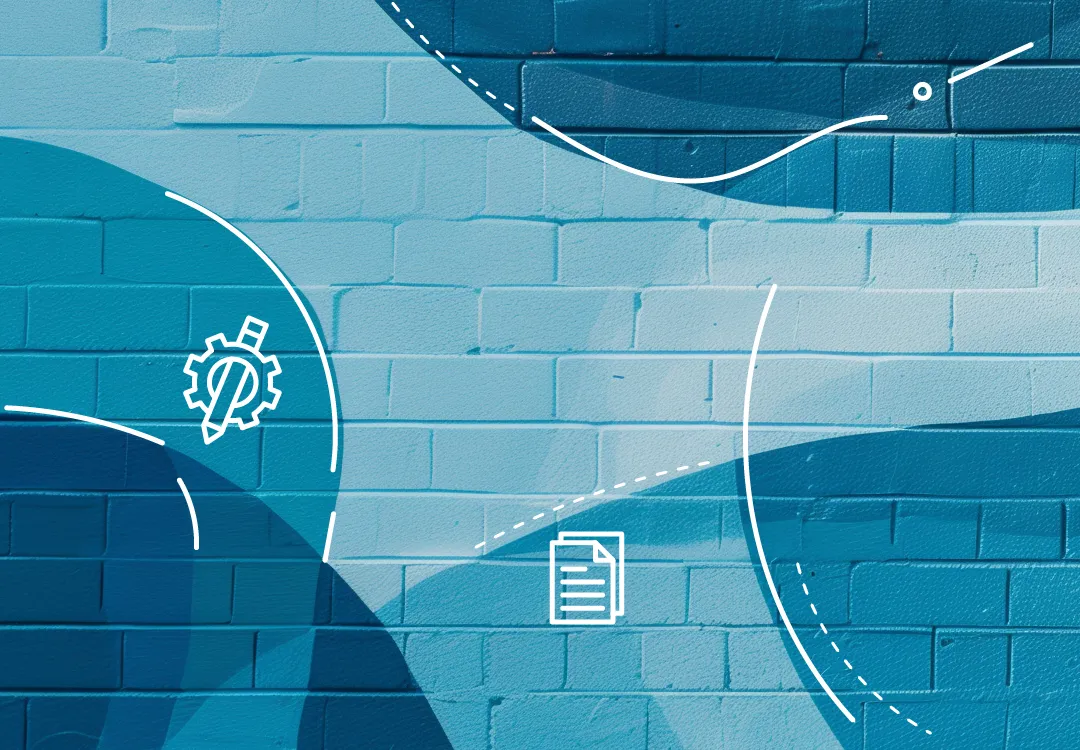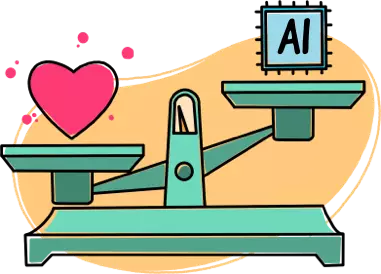
Related Services
Change managementTechnology enablementSee more in our AI series
Experts warn that artificial intelligence (AI) could replace the equivalent of 300 million full-time jobs, understandably raising alarms for employees across industries. But these fears are not new.
In 1980, a New York Times article titled “A Robot Is After Your Job” argued that the advent of the personal computer would lead to job losses and a lower quality of working life. Since then, countless voices have warned that new technologies like the Internet and cellphones will make traditional jobs obsolete. It’s true that technological innovation has changed the landscape of work, but that doesn’t have to be a negative.
Nimble organizations can begin implementing generative AI by identifying areas where creative automation could add value, such as content generation, product design, or customer engagement, all while prioritizing their employees through the process. AI doesn’t have to follow the same fear-driven cycle of job loss and workplace upheaval that past technological shifts have sparked. With the right approach, organizations can integrate AI automation, equip employees with the skills to use it, and uphold ethical safeguards—without fueling anxiety, toxic workplace culture, or unnecessary turnover.

The role of empathy in AI implementation
Organizations implementing AI would be wise to lead with empathy and invest heavily in existing staff. Leading with empathy requires curiosity and transparency. Curiosity to understand your staff’s anxieties around AI, the common challenges they experience, and how AI can support their day-to-day work; and transparency to openly discuss how the organization plans to navigate AI automation together. Without a planned and thoughtful approach, organizations run the risk of employees thinking they’ll be replaced by AI, expected to learn how to use new technology without organizational support, or be replaced entirely by a more digitally savvy workforce.
How do leaders implement AI and automation effectively while supporting their workforce?
AI automation requires a balanced approach—advancing technology while actively engaging employees. Leading with empathy means opening the conversation, transparently discussing the reasons for AI implementation, and listening to feedback on the implementation process. Too often, leaders fail to take into account their employees’ perspectives on technology change, and as a result, the majority of digital transformation initiatives fail. It’s up to leadership to demystify AI and show how it can be a catalyst for innovation and workload balance, rather than a threat to one’s livelihood.
It also means providing tools and resources so your workforce can learn how to use new technology effectively. Eagle Hill’s research on technology implementation finds that 78% of employees do not get the support they need to benefit from technology-driven changes at their organizations, and 83% say technology is not improving their ability to add value. Staff deserve the chance to learn new skills, grow, and thrive alongside their organizations during times of innovation.

78% of employees
do not get the technological support they need at their organizations

83% of employees
say technology is not improving their ability to add value
Think of AI adoption as a chance for organizations to ensure employees are supported and heard rather than as a quick fix to boost the bottom line. History suggests companies that ride the technology wave alongside their employees—providing learning opportunities and prioritizing communication—fare better than those that don’t.
AI is here to stay: a tale of two companies
Consider the drastically different outcomes of 19th-century industrial giants General Electric (GE) and Kodak. The companies were founded only four years apart in the same state, and both enjoyed huge success over the next century. Yet today, GE is a multi-industry giant with a market cap of $123 billion, while Kodak is a shadow of its former self at $385 million.
How did GE blossom while Kodak buckled under the pressure of industry disruptors? GE leadership says the company has made a point of continually reexamining itself and working on experimental innovations at the edge of technology: augmented and virtual reality, robotics, and blockchain. More important, the company invests more than $1 billion annually in employee development, providing its staff with a broad range of on-the-job learning experiences, including digital training.
Rather than discarding its employees and relying on technology to propel the company forward, GE recognized the importance of supporting its workers and providing training opportunities tailored to their needs and interests. When employees are excited about using new tools in their roles, the whole organization thrives.
GE’s empathy amid innovation is partially responsible for the company’s enormous success. Kodak, on the other hand, was reluctant to reskill its workforce to meet digital demand; instead, it clung to film, its historical cash cow. As a result, Kodak lost out on the early opportunities of the digital revolution—possibly leading to an even more detrimental effect than they initially feared.
The bottom line
Amid big technological changes, leading with empathy and investing in existing staff go a long way. Introducing AI automation can be scary—but organizations can mitigate that fear by walking hand-in-hand with their employees: hearing them out, giving them the training and tools to succeed, and exciting them about the innovation ahead. This is how you can lead with technology, rather than letting technology lead you.
Let’s get started
AI automation should drive efficiency, not frustration or fear. See how we can help you implement AI strategically—aligning technology, people, and processes to deliver real results.


